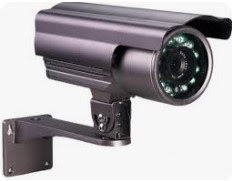Setting up a CCTV Camera Motion Alarm involves configuring your surveillance system to detect motion and trigger an alert when movement is detected. The specific steps may vary depending on the brand and model of your CCTV camera system, but here is a general guide:
1. Access Camera Settings:
Ø Log in to your
CCTV camera system using the provided credentials.
Ø Navigate to the
camera settings or configuration menu.
2. Enable Motion Detection:
Ø Look for the
motion detection settings within the camera menu.
Ø Enable or turn
on the motion detection feature.
3. Adjust Sensitivity Settings:
Ø Many systems
allow you to adjust the sensitivity level of motion detection. Higher
sensitivity may trigger alerts for smaller movements, while lower sensitivity
may require more significant motion to trigger an alert.
Ø Experiment with
sensitivity settings to find the optimal level for your environment.
4. Set Detection Area:
Ø Define the
specific areas within the camera's field of view where motion detection should
be active. This helps reduce false alarms triggered by irrelevant movements.
Ø Typically, you
can draw or select specific zones within the camera view.
5. Configure Alarm Actions:
Ø Determine what
actions the system should take when motion is detected. Common options include
sending email alerts, triggering an audible alarm, or activating external
devices (e.g., lights, sirens).
Ø Set up the
notification preferences, including email addresses or phone numbers for
receiving alerts.
6. Adjust Alarm Schedule:
Some systems allow you to schedule
when motion detection is active. This is useful if you want to disable motion
alerts during certain hours when legitimate movements are expected.
7. Test the Motion Detection:
Save your settings and perform a test
by moving within the camera's field of view. Ensure that motion detection is
working correctly and that you receive the expected alerts.
8. Fine-Tune Settings:
Based on test results, fine-tune
sensitivity, detection areas, and other settings to minimize false alarms and
optimize the system's performance.
9. Regular Maintenance:
Periodically review and update your
motion detection settings, especially if environmental conditions change or if
false alarms become more frequent.
10. Consult User Manual or Support:
Refer to the user manual provided by
the camera manufacturer for specific instructions related to your camera model.
If you encounter difficulties, contact customer support for assistance.
Keep in mind that specific steps and features may
vary depending on the brand and model of your CCTV camera system, so it's essential
to refer to the user manual for accurate instructions.








0 Comments